It’s the Historical Sew Fortnightly Challenge #12 – when we get to this we’ll be halfway through the year!
Challenge #12, due Tue July 1st, is Shape and Support.
Throughout history humans have changed their form and silhouette with garments that pulled in and pushed out. Few eras of fashion have been entirely satisfied with the natural human body. In this Challenge make a garment that changes and distorts the human form, whether it pulls it in, as with corsetry, or extends it, with ruffs and sleeve supports, fathingales and bustles and hoopskirts. As long as the garment creates an extreme silhouette, it counts
Throughout history we have extended our heads with mad hats:
Lifted our bust and pulled in our waists with bust bags and corsets:
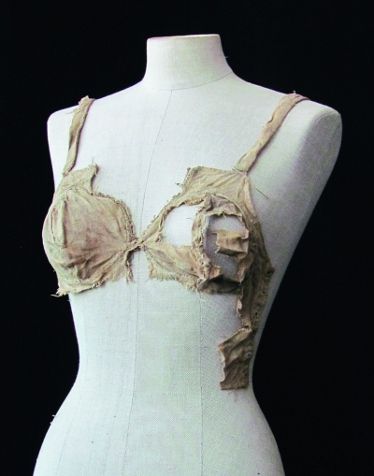
Bust bodice found in Lengberg castle, the end of 15th century (ca 1480 ?), University of Innsbruck, photo University of Innsbruck

Corset, 1830—35, American cotton, bone, metal, Brooklyn Museum Costume Collection at The Metropolitan Museum of Art 2009.300.3031
Turned our bottom halves into stiff cones with farthingales:
And our top halves into stiff cones with stays:
We’ve ‘improved’ our bums with bum rumps:
And our busts with bust enhancers:
We’ve lifted our feet with heels and chopines:
We’ve been cone shaped and bell shaped and elliptical:
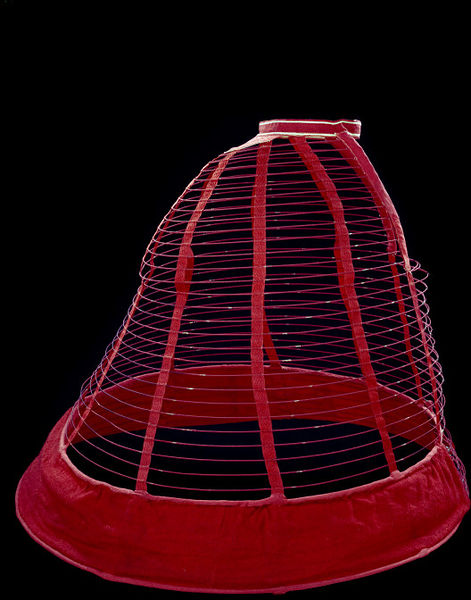
Cage crinoline, Great Britain, 1860-1865, Spring steel, woven wool, linen, lined with cotton, and brass, T.150-1986
Pinched in and pushed out in ever way, shape and form:
Nor have men been immune to body re-shaping.
They have had padded doublets to turn their chests into pigeon breasts, and poofed pantaloons to balloon their thighs:
Men have laced in with Beau Brummel bodice (and padded thighs, hips, shoulders and calves by the look of it):
And stiffened their fronts with doublets:
They have tilted their chins with wide ruffs:

Portrait of a Young Man, by Federico Barocci (Il Baroccio), perhaps c. 1580-90 but possibly slightly later, ca. 1600
And both sexes have created full thighs and calves with symmetricals.
All these odd and peculiar contraptions, just to achieve the shape and silhouette that fashion deemed necessary and attractive!

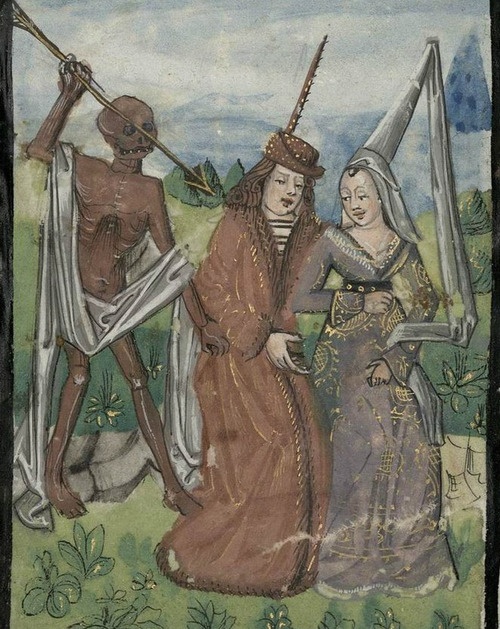
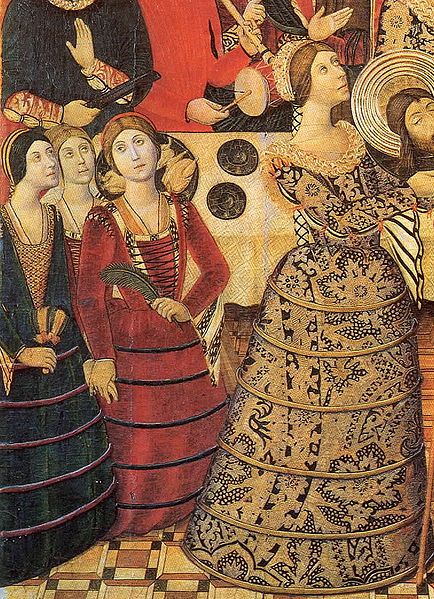

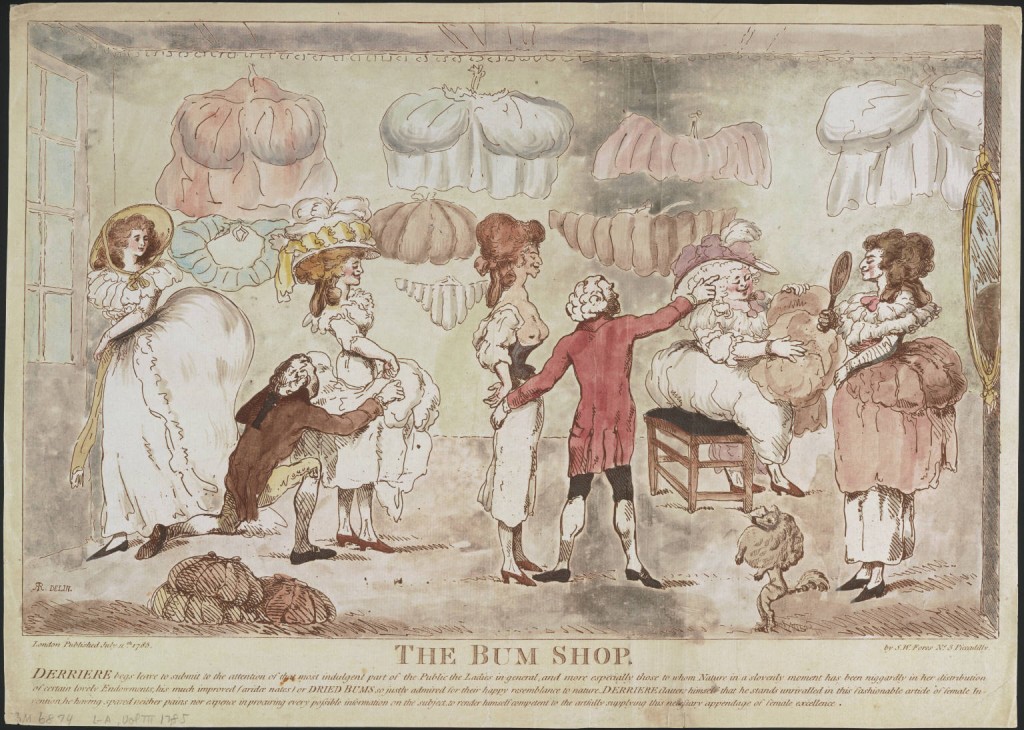
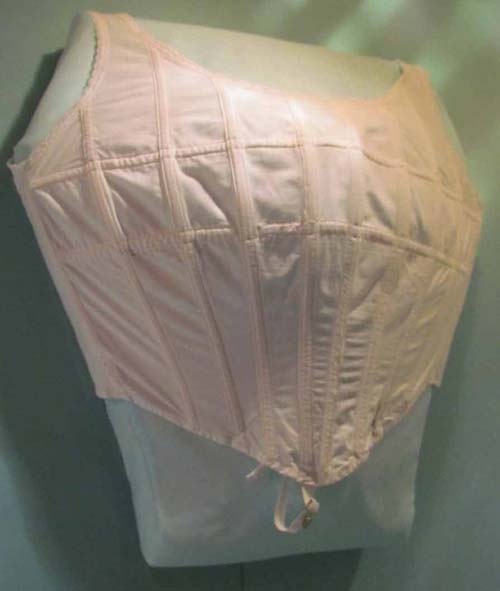
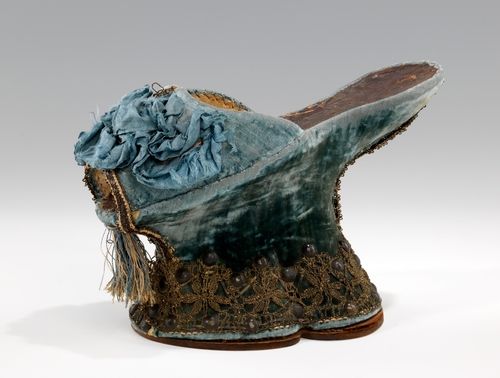

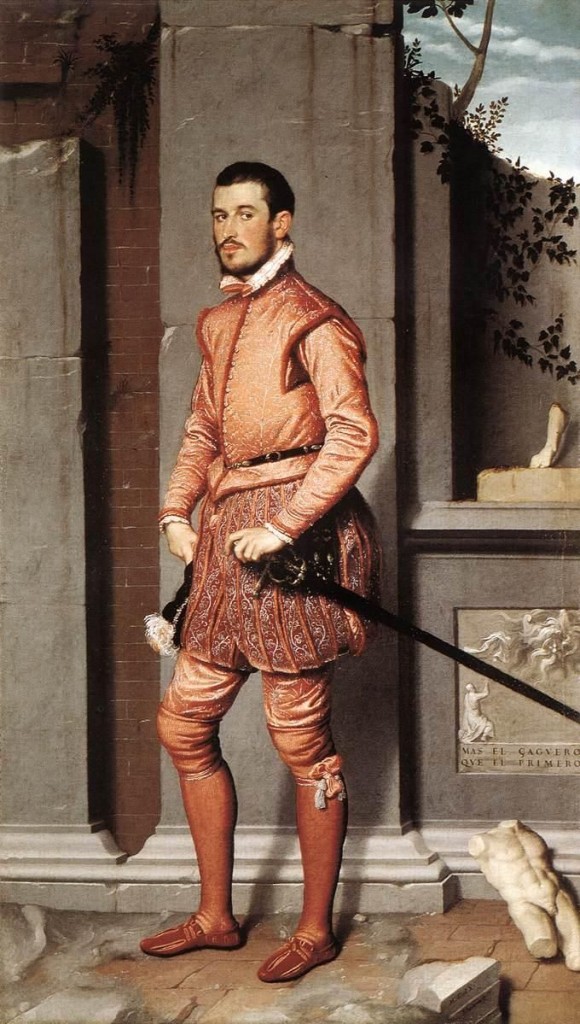
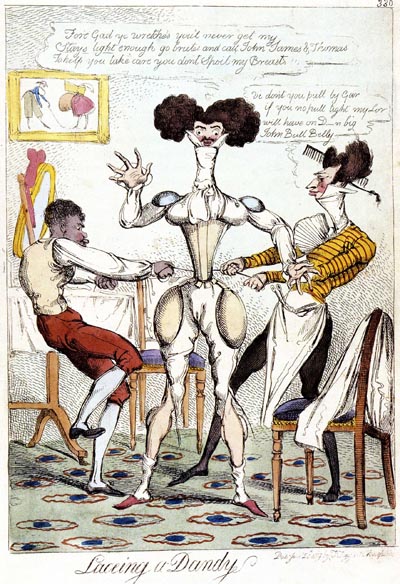

Whereas now, for the most part, we’re expected to alter our actual bodies to the ideal. I think I’d rather wear stays or a steel-reinforced skirt!
Right–Pilates makes no bones about it, as they call your core your ‘girdle’. Oh, we do have Spanx, though.
I should live in a time when people think women need a bum rump to rump up our bums. I’d save so much money by doing it naturally.
And don’t forget the cod-piece, Henry VIII had some good examples of these in the portraits painted of him.
I’d be interested in some discussion of how cultures outside of Europe went about altering their silhouettes!
So would I!
I can only remember actual body-alteration techniques, though… like flattening babies’ foreheads with some Native American groups.
Foot-binding.
I kinda see full-on body modification as a bit different than silhouette-changing garments which can be removed, allowing your body to revert to a more normal shape (even corsets, unless taken to a historically inaccurate extreme, aren’t permanent body changers).
That’s precisely what I was thinking when I wrote I could think “only” of such examples.
I know the male actors in China wore stilts that mimiced lotus feet to play the female roles. I forget the name for the shoes but they forced the male actors to even walk like the Han women.
Definitely! Although come to think of it, here in South Asia, the answer would be “not much.” I can’t think of any history of an infrastructure (such as corsets, crinoline, paniers) intended to give an impression of a different shape. You basically get two types of traditional treatment: draping to emphasize the sensual but natural silhouette (a sari) or accretion (lots of layers of fancy textiles that are all about displaying wealth, so that in effect, a woman could wear her dowry.) The body itself would be physically altered through piercings in order to further hang wealth on it, but the impression of the shape wasn’t changed.
Come to think of it, changing the shape of the body per se through costume didn’t happen much in the West, either, until the Renaissance, when you saw a huge rise in merchant trade as well as a changed consciousness of the place of the individual and an increased emphasis on invention and change. (Fashions never changed much in South Asia.) Plus, there’s the weather factor: It’s COLD in Europe. People had an incentive to find ways to wear lots of layers!
It’s worth mentioning skin-whitening, though, which was and is big business in Asia. Not a silhouette-changing example, but still one of altering your biggest organ.
I would not have thought of crazy hats and heels in this context, but they do fit in.
Very insightful! This is going to be an interesting challenge!
I just wanted to let you know that the details of the last few challenges haven’t been linked to the main Historical Sew Fortnightly page. The last one linked is #9 – Art, so 10, 11, and 12 are missing. Just a heads up.
I made a rather disappointing corset.
http://mouseborgdesigns.blogspot.ca/2014/06/vaguely-1880s-blueish-grey-corset.html
http://thedreadedseamstress.blogspot.com/2014/07/historical-sew-fortnightly-12.html
Yet another corset
I made a rump pad to lift the skirts from one of my previous entries, an 18th century silk gown that I did for the Art challenge.
http://teacupsamongthefabric.blogspot.com/2014/07/underpinnings-for-18th-century-gown.html
Laurie
[…] The Challenge: # 12 – Shape and Support […]
[WORDPRESS HASHCASH] The comment’s server IP (192.0.80.199) doesn’t match the comment’s URL host IP (66.155.11.238) and so is spam.
It is done, I create an 1880’s bustle pad for this challenge.
http://sewingfromanothertime.wordpress.com
Prentice
Finally my first entry into the HSF 2014! Unfortunately my projects haven’t aligned very well with the due dates this year.
I made some 18th century stays (1780ish).
http://teainateacup.wordpress.com/2014/06/29/making-18th-century-stays/
I thought I’d missed this challenge, as I was working on a pair of fitted upper hose and codpiece for my boyfriend… until I realised this was a wonderful and slightly unexpected example of shaping and supporting.
Thus I present a pair of post-Burgundian Franco-Flemish fitted upper stocks aka “those sexy Flemish shorts”
I made a pair of Regency short stays.
http://levagabondage.blogspot.com/2014/07/challenge-twelve-shape-and-support.html
http://wandabvictorian.wordpress.com/2014/07/06/hsf-14-challenge-12-shape-and-support/
[…] je suis sur la realisation d’une mini tournure queue d’ecrevisse test pour le Challenge #12 Shape & Support du 1er juillet. Les morceaux sont dejà coupes, mais cela fera l’objet d’un autre […]
[…] Avant d’attaquer mon projet de tenue de jour 1913/14, j’ai eu envie de realiser enfin cette tournure 1880 qui se fait attendre depuis belle lurette. Je me suis motivee à la commencer pour coller au calendrier des challenges du Historical Sew Fortnightly. […]
[…] Pour avoir reussi à tenir un delai, je dois dire que je suis furieusement fière de moi. Pour ce challenge n°12 (oui le dernier que j’ai fait c’etait le n°1…) il s’agissait de coudre […]